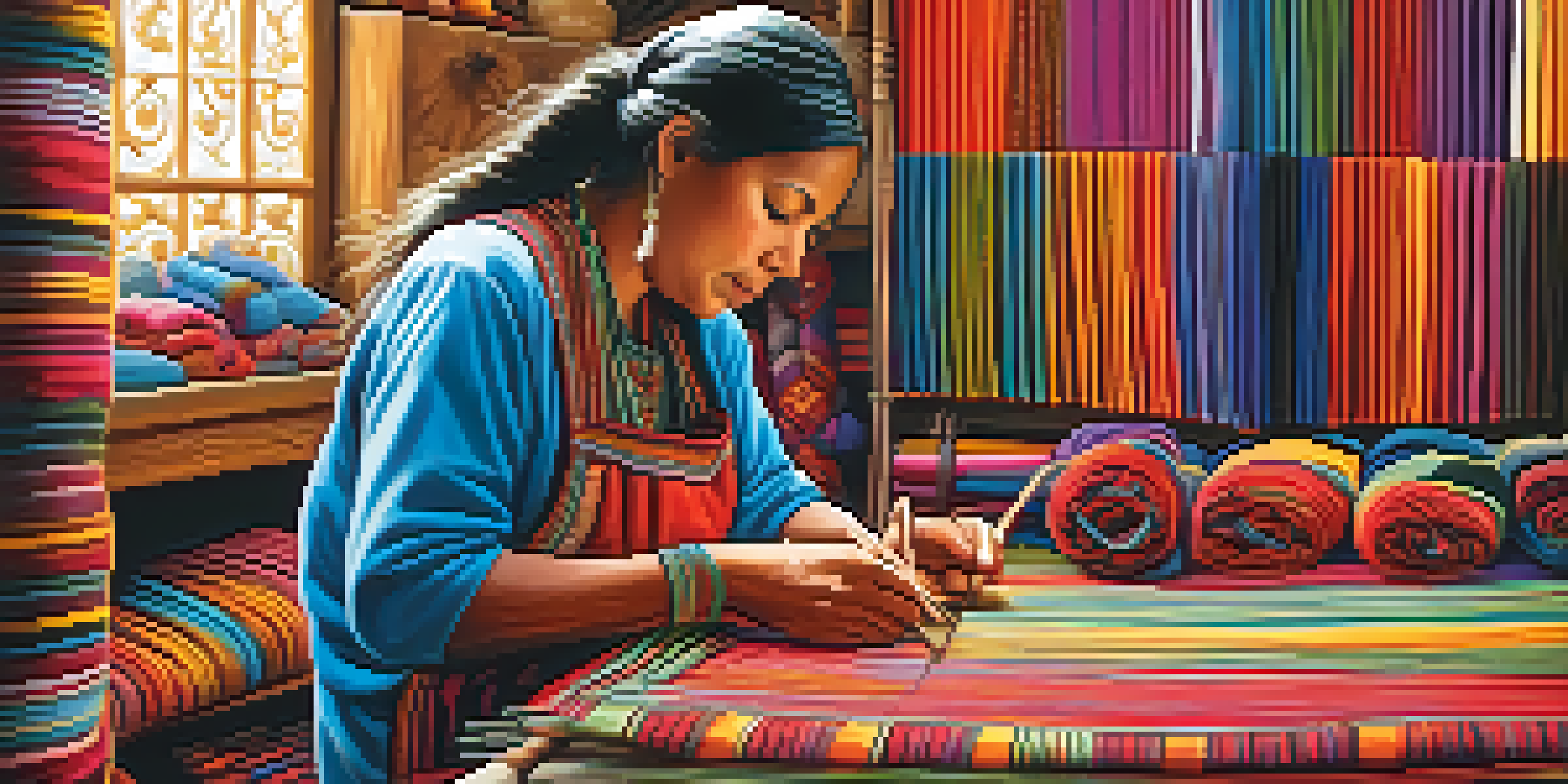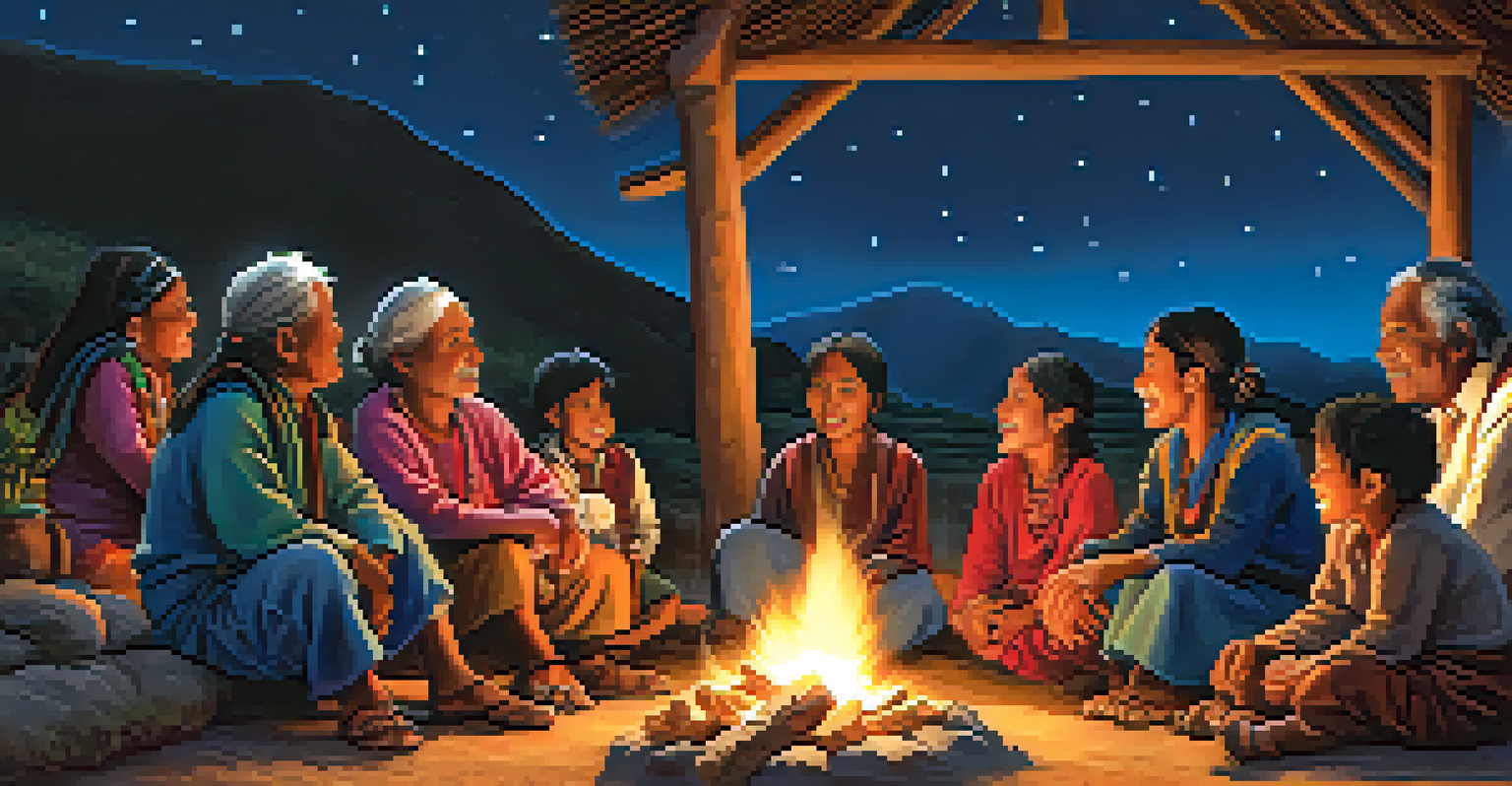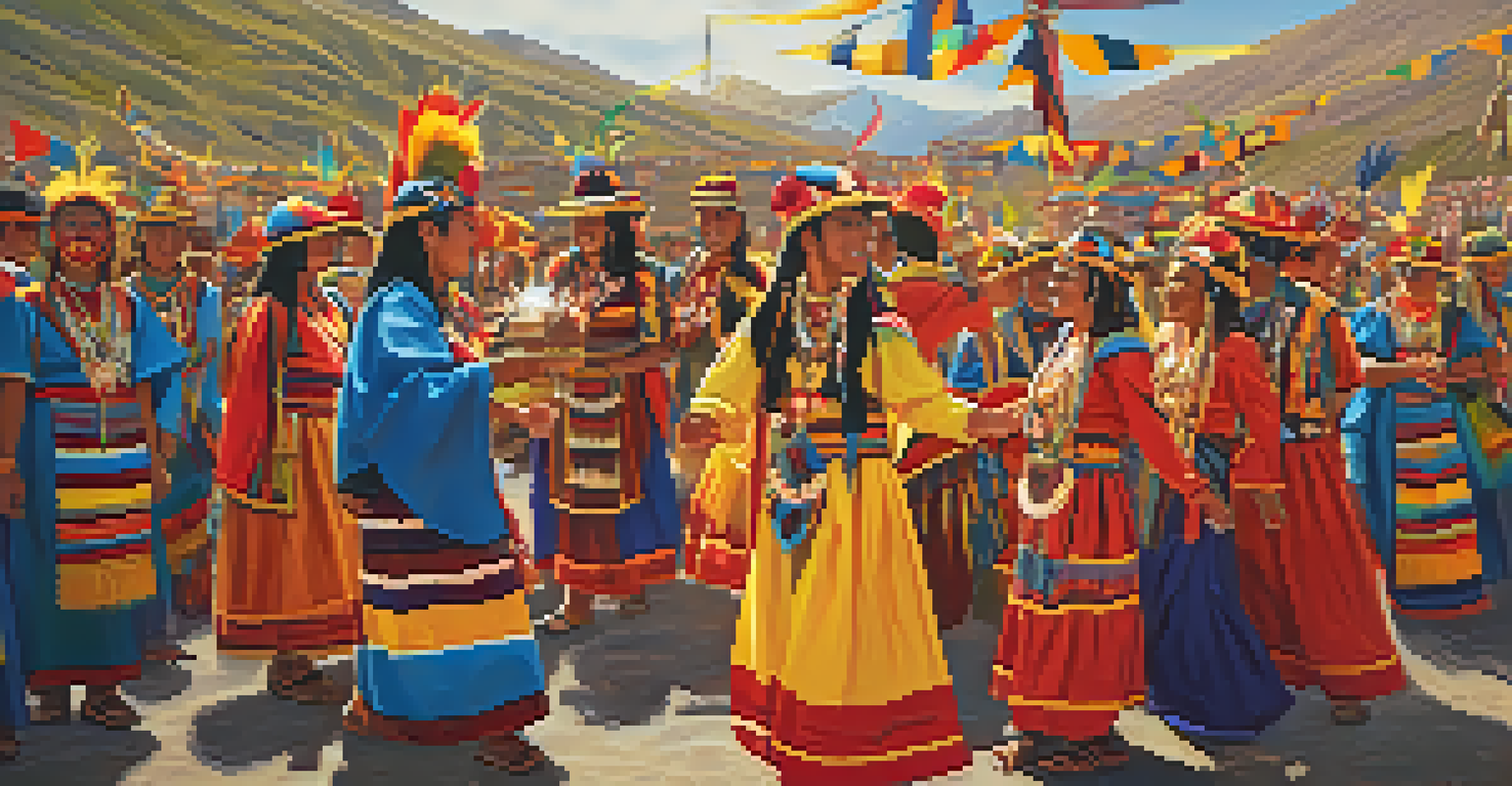Cultural Expressions in Peru’s Indigenous Languages

The Importance of Language in Indigenous Cultures
Language is more than just a means of communication; it embodies the identity and heritage of a community. In Peru, indigenous languages like Quechua and Aymara carry the histories, traditions, and philosophies of their speakers. These languages serve as vital links to ancestral wisdom, allowing cultural practices and values to be passed down through generations.
Languages are not just a collection of words; they are the stories, the histories, and the identities of the people who speak them.
For many indigenous peoples, their language is a way of understanding the world around them. It shapes their perspectives on nature, spirituality, and social relationships. This connection between language and worldview highlights why preserving these languages is crucial for maintaining cultural diversity and integrity.
Moreover, indigenous languages in Peru are rich in metaphors and expressions that reflect the unique landscapes and lifestyles of their speakers. For instance, the Quechua language has specific terms for various types of maize, which not only signifies its importance in their diet but also illustrates their deep connection to agricultural practices.
Folklore and Storytelling Traditions
Folklore is an essential aspect of cultural expression in Peru's indigenous communities, with storytelling serving as a primary means of transmitting knowledge. Through captivating tales, elders pass down lessons about morality, nature, and community values, often using elements of fantasy and humor to engage listeners. This oral tradition not only entertains but also reinforces cultural identity and social cohesion.

In these stories, characters often embody specific traits that reflect societal ideals or cautionary tales about behavior. For instance, animals frequently play pivotal roles, symbolizing various human characteristics or moral lessons. This rich tapestry of folklore showcases the creativity and wisdom embedded in indigenous languages.
Language as Cultural Identity
Indigenous languages in Peru are vital for preserving cultural heritage, embodying the histories and philosophies of their communities.
Storytelling events are communal gatherings where families and friends come together, fostering a sense of belonging and shared heritage. These moments become a celebration of language, culture, and history, making them invaluable to both the community and the preservation of their linguistic traditions.
Songs and Music as Cultural Expressions
Music is another powerful cultural expression found in Peru's indigenous languages. Traditional songs often narrate stories of love, nature, and social issues, serving as both entertainment and a means of cultural preservation. Instruments like the charango and pan flute complement the lyrics, creating a vibrant soundscape that resonates with listeners.
The preservation of indigenous languages is essential not only for cultural diversity but also for the survival of our shared human heritage.
Many songs are performed during festivals or rituals, marking significant moments in the community's life cycle, such as harvests, weddings, or spiritual ceremonies. These performances not only showcase the beauty of the language but also reinforce community bonds and shared values.
The incorporation of indigenous languages in music helps to keep these languages alive, especially among younger generations. By listening to songs in their native tongue, children and young adults develop a connection to their heritage and an appreciation for the cultural narratives woven into the melodies.
Art and Visual Expressions in Indigenous Cultures
Art plays a crucial role in expressing the cultural identity of Peru's indigenous peoples. Through textiles, pottery, and painting, artisans convey stories, beliefs, and ancestral knowledge that often reflect their language and traditions. Each piece of art serves as a visual narrative that connects the viewer to the artist's heritage.
For example, the intricate patterns found in traditional Andean textiles often contain symbolic meanings tied to nature, mythology, and social structures. These designs are not only aesthetically pleasing but also convey important cultural messages that resonate with the community's identity.
Folklore and Storytelling's Role
Storytelling traditions transmit moral lessons and reinforce community values, showcasing the creativity embedded in indigenous languages.
Moreover, the creation and appreciation of art in indigenous languages encourage a deeper understanding of their cultural significance. Workshops and exhibitions that focus on indigenous art often include explanations in the native languages, providing a rich context that enhances the viewer's experience and appreciation.
Rituals and Ceremonies as Cultural Signifiers
Rituals and ceremonies are integral to the cultural fabric of Peru's indigenous communities, often performed in native languages. These events mark important life transitions, agricultural cycles, and spiritual beliefs, showcasing the community's values and traditions. Language plays a pivotal role in these ceremonies, as prayers and chants are often recited to honor ancestors and nature.
For instance, the Inti Raymi festival, which celebrates the sun god, involves elaborate rituals conducted in Quechua. This not only emphasizes the importance of the sun in agricultural societies but also fosters a sense of unity among participants as they engage in shared beliefs and practices.
The use of indigenous languages during rituals reinforces the cultural significance of these events and helps preserve the language itself. As younger generations participate in these ceremonies, they learn the language and its associated meanings, ensuring the continuity of their cultural heritage.
Challenges Facing Indigenous Languages Today
Despite the rich cultural expressions found in Peru's indigenous languages, these languages face significant challenges. Globalization, urbanization, and the dominance of Spanish have led to a decline in native language speakers. Many young people are increasingly choosing to communicate in Spanish, which threatens the survival of their ancestral languages.
Additionally, the lack of educational resources and support for indigenous languages contributes to this decline. Schools often prioritize Spanish, leaving little room for students to learn and embrace their native tongues. This educational gap can lead to a disconnection from cultural roots and heritage.
Challenges of Language Survival
Globalization and a lack of educational resources threaten the survival of indigenous languages, prompting community efforts for revitalization.
Efforts are being made to revitalize these languages, including community initiatives and government programs. By promoting bilingual education and creating platforms for indigenous language use, communities are working to ensure that their languages and cultural expressions endure for future generations.
The Role of Technology in Language Preservation
In the digital age, technology has emerged as a powerful ally in the preservation of indigenous languages. Online platforms and mobile applications provide resources for learning and practicing these languages, making them more accessible to younger generations. This shift offers exciting opportunities for revitalizing interest in indigenous cultures and languages.
Social media has also played a key role, as speakers of indigenous languages can connect and share their experiences with a broader audience. By showcasing cultural expressions through videos, music, and art, they help raise awareness and appreciation for their languages.

Furthermore, language documentation projects and digital archives are being developed to preserve linguistic resources. These initiatives not only protect the languages from extinction but also create a rich repository of cultural knowledge that can be accessed by anyone interested in learning about Peru's indigenous heritage.